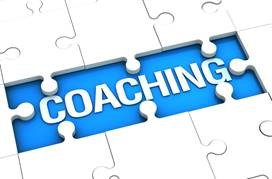COACHING FOR PERSONAL ACCOMPLISHMENT
 When we think about our life accomplishments, we often reflect on what we’ve achieved career-wise. We received the promotion and big raise, moved to the corner office or changed companies to move forward in our careers. But what about our personal accomplishments? What do we want to achieve outside of the office in terms of personal goals that bring us joy and fulfillment? With the busy day-to-day of our work schedules, these goals and accomplishments sometimes fall to the back burner. It’s important to carve out time to think about what we want out of life and put goals in place to make them possible.
When we think about our life accomplishments, we often reflect on what we’ve achieved career-wise. We received the promotion and big raise, moved to the corner office or changed companies to move forward in our careers. But what about our personal accomplishments? What do we want to achieve outside of the office in terms of personal goals that bring us joy and fulfillment? With the busy day-to-day of our work schedules, these goals and accomplishments sometimes fall to the back burner. It’s important to carve out time to think about what we want out of life and put goals in place to make them possible.
Perhaps you’ve heard of the SMART mnemonic. It’s a useful way of making goals more powerful and attainable. SMART typically stands for:
- S – Specific (or Significant)
- M – Measurable (or Meaningful)
- A – Attainable (or Action-Oriented)
- R – Relevant (or Rewarding)
- T – Time-bound (or Trackable)
For example, instead of having “Travel the world” as a personal goal, it’s more powerful to use the SMART goal of “To complete my world travels by December 31, 2028.” You can then start to break down your goal and begin preparation. Here are a few broad guidelines to help you set effective, achievable personal goals – whether you want to travel the world, take up a new hobby, run a marathon or whatever your heart’s desire:
Write it all down: Putting goals on paper give them more credibility and force. Don’t forget to state each goal as a positive statement!
Be precise: Entering dates, times, amounts, etc. can help you measure achievement and gives you a stronger sense of accomplishment.
Set priorities: If you have several goals, give each a priority to avoid feeling overwhelmed. It also keeps you focused on your most important goals.
Be realistic: Don’t fall into the trap of setting goals that are unrealistic and possibly unattainable. There’s nothing wrong with a challenge, but too many obstacles can lead to frustration and throwing in the towel.
You wouldn’t set out on a major journey without any idea of your destination. Why should your life be any different? Leah M Joppy and Associates has helped many people accomplish their life goals outside of the office and we can do the same for you! Call us at 301-670-0051 or email leah@lmja.com to discuss what you want to achieve.
Here are other reasons why people work with a coach.
LEADERSHIP COACHING
 Football legend Vince Lombardi said that, “leaders are made, not born.” When it comes to effective leadership, we can all use a strategy that helps us hone our skills and bring out the best in our team. But figuring out how to do that can be a challenge and can feel overwhelming when you already have a lot of other responsibilities on your plate. We often get so caught up in thinking that our current leadership methods are working “well enough,” so why rock the boat? Leadership coaching is an ideal way to break out of a leadership rut and get a fresh perspective.
Football legend Vince Lombardi said that, “leaders are made, not born.” When it comes to effective leadership, we can all use a strategy that helps us hone our skills and bring out the best in our team. But figuring out how to do that can be a challenge and can feel overwhelming when you already have a lot of other responsibilities on your plate. We often get so caught up in thinking that our current leadership methods are working “well enough,” so why rock the boat? Leadership coaching is an ideal way to break out of a leadership rut and get a fresh perspective.
What does leadership coaching entail? It’s a chance to step back from your everyday method of leadership, examine what’s working and address what’s not. Initially, we take a look at your leadership style and behaviors, along with those in your organization. We then meet to discuss issues and plans. Support and guidance is offered to address any concerns. A multi-step plan of action is developed, and helpful tools and resources are provided (i.e. – reading materials, technology tools, outside learning opportunities). And don’t forget accountability and feedback. We meet regularly to determine how things are going, where you are with your goals and how your skills are developing.
What are the benefits? First of all, you’ll become a more effective leader through greater self-awareness of your decisions, how to best use the strengths of your team and effective delegation of tasks. But it goes far beyond that. You’ll also gain confidence, discover strengths and talents you may not have known existed and gain a new perspective. Your organization will benefit through your enhanced skills and you’ll uncover new methods of tackling challenges while bringing out the best in your team.
Have you been struggling with the challenges of leadership? Or do you feel like your “tried and true” methods could use a little, well, tweaking? Then, let’s talk! Leah M Joppy and Associates has a wealth of experience helping leaders with all different levels of experience, from those new to the role to others who have been at it for years. Call us at 301-670-0051 or email leah@lmja.com to discuss your unique needs.
Check out our article on why people choose to work with a coach.
IMPLICIT BIAS (Part 1)
 You may have heard the term “implicit bias” used to describe different situations, but may not really know what it means. Implicit bias, also known as unconscious bias, refers to judging people based on our unconscious thoughts, beliefs or feelings. It often happens without us realizing it when our brains make quick assessments and judgments of people and situations.
You may have heard the term “implicit bias” used to describe different situations, but may not really know what it means. Implicit bias, also known as unconscious bias, refers to judging people based on our unconscious thoughts, beliefs or feelings. It often happens without us realizing it when our brains make quick assessments and judgments of people and situations.
Whether we want to admit it or not, everyone has biases. However, it’s important to remember that bias stereotypes do not often come from a place of bad intent. Rather, implicit biases are the product of learned associations and social conditioning. They start at a young age and are formed in our brains through years of various influences. Think about the following questions and how your implicit or unconscious bias may come into play:
- Picture a nurse at your local hospital. What’s the image that pops into your head?
- Picture a firefighter at your local firehouse. Again, what image comes to mind?
- You’ve just been cut off in traffic and are astonished that someone can drive that badly! What image enters your head when you think about the driver?
- A new stay-at-home parent wants to join your playgroup. Before the parent arrives, what image comes to mind?
- You’re boarding a plane and peek into the cockpit. The pilot, co-pilot and flight engineer are all women. What are your first thoughts?
These can be tough questions to answer honestly. We’d like to think that we’re past all the typical stereotypes that exist in our society. We can feel embarrassed or ashamed that we’re surprised if a stay-at-home parent is a father or a firefighter is a woman. Again, implicit biases don’t exist because we’re bad people, but are so deeply ingrained in our brains that we have to fight the automatic urge to jump to conclusions
Our biases affect us and our decision-making processes in so many different ways, including our perceptions, attitudes and behaviors. Next month, we’ll discuss how implicit bias can affect life in the workplace. Leah M Joppy and Associates regularly conducts seminars to address and combat unconscious bias. For more information and to discuss the unique needs of your organization, contact us at 301-670-0051 or email leah@lmja.com.
Coaching For High Level Administrative Staff
 If you’re in a high-level administrative position, you’re used to wearing a lot of hats. From handling a wide variety of day-to-day duties to dealing with all types of personalities, it’s a job that requires a lot of knowledge and flexibility. Plus, you’re expected to do it all with a smile on your face and a “can do” attitude. High-level administrative positions can be extremely demanding and can sometimes lead to high stress levels and burnout. Here are some of the common challenges people in these positions face:
If you’re in a high-level administrative position, you’re used to wearing a lot of hats. From handling a wide variety of day-to-day duties to dealing with all types of personalities, it’s a job that requires a lot of knowledge and flexibility. Plus, you’re expected to do it all with a smile on your face and a “can do” attitude. High-level administrative positions can be extremely demanding and can sometimes lead to high stress levels and burnout. Here are some of the common challenges people in these positions face:
Challenge 1: Maintaining a work/life balance
Challenge 2: Dealing with difficult people
Challenge 3: Ensuring proper communication strategies are in place and making sure they’re followed
Challenge 4: Feeling disrespected and blamed for anything that goes wrong
Challenge 5: Feeling like you need to be available 24/7
If you’re an executive assistant, maybe some of these challenges sound familiar to you. And maybe you’re ready to make some changes that will help you both in your job and outside the office. That’s where a life coach can work with you and provide valuable perspective. By assessing the unique challenges you face in your position, a life coach can help you develop a detailed action plan with clear and specific expectations. Some of the outcomes from working with a life coach include:
- Building a stronger partnership with your manager(s)
- Establishing stronger boundaries
- Improving communication and streamlining processes
- Increasing productivity and feeling more focused dealing with day-to-day tasks
- Reducing stress and enjoying your job (and life!) more
If you’re starting to feel the burnout that often accompanies high-level administrative positions and want to make some meaningful life changes, Leah M. Joppy and Associates is ready to help. Call us at 301-670-0051 or email us at leah@lmja.com.
Need more reasons for choosing to work with a coach? Learn more.
End Of Year Budget Needs – Popular Courses (Part 2)
 If your EOY budget still contains money that needs to be spent, you may be thinking about what to do with those extra dollars. Investing them in your team is something that will pay off for years to come! Last month, we focused on two of our most popular courses that have helped departments deal with conflict and develop effective interpersonal skills. Here’s a look at two more of our most sought-after courses that we’re focusing on this month:
If your EOY budget still contains money that needs to be spent, you may be thinking about what to do with those extra dollars. Investing them in your team is something that will pay off for years to come! Last month, we focused on two of our most popular courses that have helped departments deal with conflict and develop effective interpersonal skills. Here’s a look at two more of our most sought-after courses that we’re focusing on this month:
Developing Inclusive Teams: According to studies on the subject, leaders who create an inclusive culture for their team see performance increase by 17 percent, as well as increases in collaboration and decision-making quality. While most managers believe having a diverse and inclusive work culture is critical to performance, they don’t always know how to achieve that goal. Our course covers a broad range of topics, such as examining the culture of an organization, identifying current and potential problems and providing tangible tools for meaningful change. Each organization faces it’s own unique challenges when it comes to inclusivity and we work with you to build a customized course that will yield real results.
Organizational Strategic Planning: Organizational strategic planning is an incredibly important activity that covers a lot of bases. It involves setting priorities, determining where to focus energy and resources, ensuring that employees are working towards common goals and so much more. Our course helps you develop an effective strategic plan that clearly lays out where your organization is going, the actions needed to make progress and a blueprint for success.
If you have money left in your EOY budget to spend and are ready to invest it in your most important asset (your team!), Leah M. Joppy and Associates is ready to help! Call us at 301-670-0051 or email us at leah@lmja.com.
Why Everyone Needs a Life Coach
 The concept of life coaching is becoming more and more popular every year. You may even know someone who has worked with a life coach and find the idea intriguing. But what exactly does a life coach do and how can one help you with your own unique set of challenges? A life coach is someone who counsels clients on anything from career obstacles to personal struggles. A coach plays multiple roles in your life: he/she unlocks your potential, allows you to discover your best self, acts as a motivator and is an accountability partner.
The concept of life coaching is becoming more and more popular every year. You may even know someone who has worked with a life coach and find the idea intriguing. But what exactly does a life coach do and how can one help you with your own unique set of challenges? A life coach is someone who counsels clients on anything from career obstacles to personal struggles. A coach plays multiple roles in your life: he/she unlocks your potential, allows you to discover your best self, acts as a motivator and is an accountability partner.
If you’ve been doing some soul searching and feel like you could use a little help (or even if things are going great!), here are just a few reasons why working with a life coach could put you on the path to real and meaningful change:
- You’re feeling “stuck”: Our lives are always in transition. At times, we may feel like nothing is working in our favor and we’re not moving forward. A life coach helps you realize what you truly want from life and helps you overlook all the noise in your head that’s keeping you from achieving your goals.
- You’re feeling lost: Maybe you don’t know what you want. Perhaps you feel like you’re living your life on auto-pilot. A life coach will help you identify your personal values and how those values can translate into a more meaningful career, personal life, etc.
- You’re feeling unhappy: You know you need a change. Or you know you need to change. Either way, a life coach can help you pinpoint why you’re unhappy and help you take steps to enact meaningful and long-lasting solutions.
- You’re feeling happy: I know, I know. If you’re already happy, why do you need a life coach? Happiness can be a great motivator for change. If you love where you are in life, you’re more likely to be open to growth and wonder what else is out there to reach out and grab!
- You’re feeling comfortable: Ah, there’s nothing like your routine and comfort zone! Any variation of the familiar and you break out in a sweat. A life coach partners with you to push you out of your routine and explore what else is out there.
- You’re feeling scared: Who isn’t? You’re scared of failure, success, what people will think and say, etc. etc. A life coach will help you figure out your fears, provide you with tools to take action despite those fear and change the way you look and feel about them.
Life coaches aren’t a magic pill for all of life’s ups and downs. The solutions always reside inside of you. However, many times we’re so full of doubt and fear that we can’t hear or see the answers in front of us. Coaching helps you look at any situation from a different perspective to help you break through paralyzing thoughts.
Interested in learning more about life coaching and how working with one can bring positive and meaningful change to your life? Call Leah M. Joppy and Associates at 301-670-0051 or email us at leah@lmja.com and let’s get started. And check out our article on why people hire a coach.
Why Is It So Hard to Keep Our Goals?
 You start out motivated, enthusiastic, and with the best intentions. You’ve identified a goal (or two) and this time it’s going to be different. This time, you’re REALLY going to put in the work, see it through, and accomplish your goal once and for all. And then “things” start to get in the way, like time, finances, and life. All those good intentions are replaced with excuses and, before you know it, that goal you set out to achieve with such gusto seems impossible to accomplish.
You start out motivated, enthusiastic, and with the best intentions. You’ve identified a goal (or two) and this time it’s going to be different. This time, you’re REALLY going to put in the work, see it through, and accomplish your goal once and for all. And then “things” start to get in the way, like time, finances, and life. All those good intentions are replaced with excuses and, before you know it, that goal you set out to achieve with such gusto seems impossible to accomplish.
No matter what goal you’re trying to reach – career, financial, health, or relationship – there are some common reasons why you’re throwing in the towel and accomplishing it. Several of them are listed below:
- Waiting to take action until you feel “ready.” If you’re waiting for the stars to be aligned and everything to be perfect, you may be waiting a long time.
- Putting your goals off until “someday.” So many of us “someday” ourselves right out of what we want to accomplish in life.
- Not making your goal a priority. Saying you want to make a change is one thing. Putting in the work to make it happen is quite another.
- Viewing mistakes as failure. People often think that a step backwards means it’s time to put on the breaks. But progress rarely comes in a straight line.
- Giving up before you see results. Results don’t always fall in line within the timeframe you imagined. Impatience can be big hurdle to change.
- Neglecting to anticipate the tough times and hurdles. Change isn’t easy and some days are harder than others. This can be a challenging lesson to learn.
- Falling victim to the “fear of success.” Yes, this is really a thing. Some people don’t always feel that they deserve or are worthy of success and can sabotage their progress.
When these fears and thoughts come up, a lot of people immediately see them as a stop sign and think it’s time to call it quits. But this time it can be different. By identifying the various roadblocks, you can view them as part of the process. You can face them, process them, and even welcome them. Best of all, you can overcome them and make 2019 the year you finally accomplish your goal(s). Leah M. Joppy and Associates can help. Call us at 301-670-0051 or email us at leah@lmja.com to discuss your needs.
The Importance Of A Strong Company Culture
 You’ve certainly come across articles with titles like “The 50 Best Places To Work” or “The Best Companies For Work-Life Balance.” And no doubt you’ve questioned, “what makes these work environments so special? You may even wonder how you can create a similar feel-good atmosphere in your workplace. It’s tempting to just add a ping pong table in the break room or offer free donuts on Fridays, but it’s so much more than a few perks here and there. It all comes down to one important component: company culture.
You’ve certainly come across articles with titles like “The 50 Best Places To Work” or “The Best Companies For Work-Life Balance.” And no doubt you’ve questioned, “what makes these work environments so special? You may even wonder how you can create a similar feel-good atmosphere in your workplace. It’s tempting to just add a ping pong table in the break room or offer free donuts on Fridays, but it’s so much more than a few perks here and there. It all comes down to one important component: company culture.
Last month we discussed cultural values as a whole and how they shape the beliefs and behaviors of communities. We spend so much of our time at work that the office becomes one of the most influential communities in our lives. The culture in the office is a huge component of happiness – or discontent. It’s the invisible maker or breaker of an organization. Company culture isn’t something that can be established down the road when you have more time on your hands. It’s something that requires thought, time, and effort – not to mention really listening to your employees.
The culture within an organization becomes its identity. It’s the values, traditions, and customs that an organization believes in and practices – not just to employees, but also to customers. Every business is different and there is no single rubric for the “right” culture. However, you do need a consistent and strong set of values in order to remain competitive. Here are 3 examples of why the culture within an organization is so important:
- It creates a perception of your brand in the marketplace.
- It helps you attract and retain the best talent
- It establishes a set of identity and values for your company
Too many organizations fail to realize that their culture matters and shouldn’t be dismissed as “fluffy stuff.” According to Deloitte research, 95% of workers value company culture more than compensation. How would you describe the culture in your office? Is it something you’ve never thought about and, if you have, is there room for improvement? We are currently conducting cultural value assessments for organizations and we’re ready to help you understand more about this important component to your workplace. Please call Leah M. Joppy and Associates at 301-670-0051 or email us at leah@lmja.com to learn more.
Create A Positive Workplace Culture
 There is nothing better than working for an organization that has a great culture. It makes waking up and going to work each morning so much better! We spend so many of our waking hours at work that it’s no surprise a positive workplace culture is so high on employees’ ‘must-have’ list. While the work may be demanding, your company culture should not add stress to the day-to-day. In fact, it should inspire, motivate, and elevate enthusiasm. It may sound like a lofty goal, but it is attainable. Here are a few ways organizations can create a positive workplace culture:
There is nothing better than working for an organization that has a great culture. It makes waking up and going to work each morning so much better! We spend so many of our waking hours at work that it’s no surprise a positive workplace culture is so high on employees’ ‘must-have’ list. While the work may be demanding, your company culture should not add stress to the day-to-day. In fact, it should inspire, motivate, and elevate enthusiasm. It may sound like a lofty goal, but it is attainable. Here are a few ways organizations can create a positive workplace culture:
- Establish clear organizational core values that are communicated effectively and make employees feel involved
- Foster collaboration and open and honest communication
- Create an inclusive work environment where employees are valued and supported
- Create clear goals and rewards for employees
A positive workplace culture improves teamwork, raises morale, increases productivity and efficiency, and results in employees who want stay with your organization. But it all begins with strong leadership and the desire to look at what’s working and what’s not. A cultural values assessment evaluates where your company culture currently stands, what’s missing, and establishes a plan to make effective change. To discuss conducting a cultural value assessment for your organization, please call Leah M. Joppy and Associates at 301-670-0051 or email us at leah@lmja.com.
The Impact of Nonverbal Communication In The Workplace
 You’ve probably heard the familiar phrase, “it’s not what you say, but how you say it.” We’ve all been taught that good communication is the foundation of any successful relationship, whether personal or professional. But we may forget that it’s our nonverbal communication – our facial expressions, eye contact, gestures, posture, and tone of voice – that sometimes speaks the loudest.
You’ve probably heard the familiar phrase, “it’s not what you say, but how you say it.” We’ve all been taught that good communication is the foundation of any successful relationship, whether personal or professional. But we may forget that it’s our nonverbal communication – our facial expressions, eye contact, gestures, posture, and tone of voice – that sometimes speaks the loudest.
Consider the following example: As a staff meeting begins, project manager Jack shuffles into the room. He pulls at the sleeves of his rumpled shirt and his shoulders sag. He does not make eye contact with anyone in the room and is absorbed in looking over his notes haphazardly scratched on notebook paper. When he does speak, it’s difficult to hear him. He awkwardly clears his throat as he says, “Good morning, everyone. This will only take about a half an hour, but I’m going to walk you through some of the changes we can expect on our current project and what it means for all of us.”
But it could also go something like this: Project manager Jack walks confidently in the room. He stands tall with his shoulders back. His shirt is wrinkle-free and tucked in and his appearance is neat and professional. He directs his eyes around the room and makes sure that everyone is acknowledged. His notes are neatly on the table, but he doesn’t look at them in favor of his audience. As he begins to speak, his voice is clear, confident, and loud enough for everyone to hear. He smiles as he says, “Good morning, everyone. This will only take about a half an hour, but I’m going to walk you through some of the changes we can expect on our current project and what it means for all of us.”
The same words were used, but a completely different impression was made. It’s not what Jack said, but how he said it that changed. Only his appearance, tone, and manner were different, yet his nonverbal communication had an enormous influence on his team. Which version of Jack would you trust the most? The shuffling, difficult-to-hear person who won’t look you in eye? Or the confident, articulate person who acknowledges everyone in the room? Research suggests that we are more likely to believe a poor argument explained to us in a convincing manner than one based on sound facts and logic, but presented by someone who sounds uninterested and uninformed. That’s the power of non-verbal communication.
Have you thought about the impact of nonverbal communication on your workplace? We can show you how to improve the way you and your team use nonverbal communication through a variety of fun team activities and exercises. Please call Leah M. Joppy and Associates at 301-670-0051 or email us at leah@lmja.com to learn more.